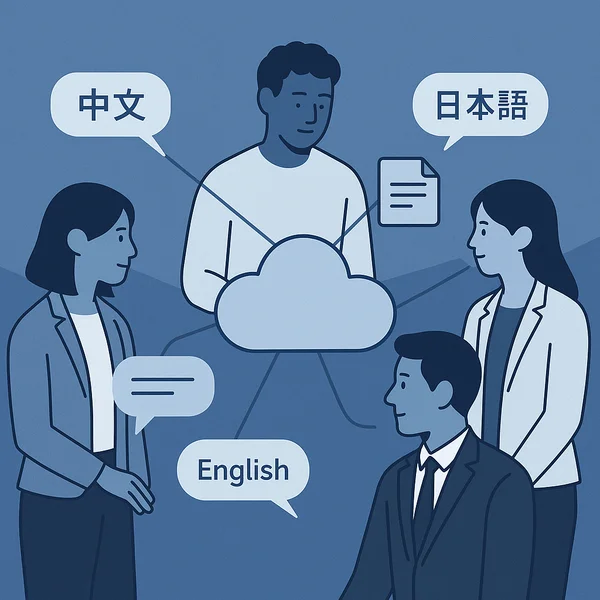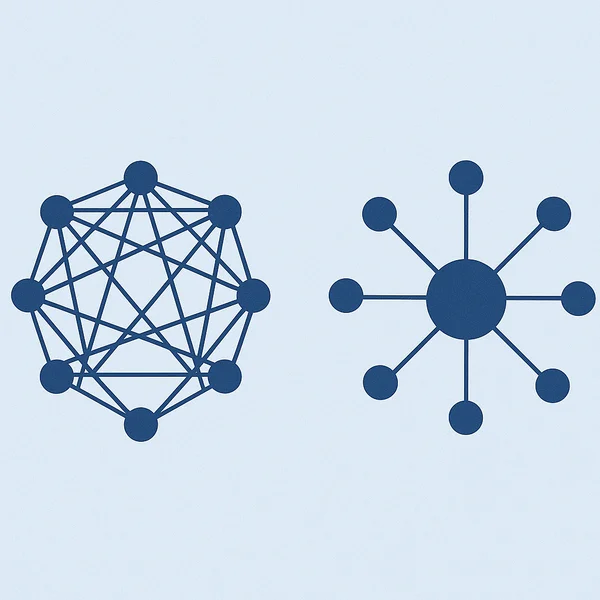Real Challenges and Practical Solutions in Cross-Language Product Development
Field Notes on Trilingual Collaboration, Role Alignment, and Information Flow Design
Why is this article worth reading?
The real challenges in cross-language product development aren’t about language itself, but about how information flows, who owns what responsibilities, and how decisions are confirmed. This article shares six common issues I've faced in actual trilingual (EN/JA/ZH) project work, along with visual models and practical solutions. Whether you're a PM, developer, coordinator, or exploring product internationalization, there's something useful for you here.

Why Language Is Just the Tip of the Iceberg
Language issues may seem like something solvable by simply “understanding each other,” but more often, what happens is:
- The client throws in a bunch of technical questions, and it takes 3 days of back-and-forth just to respond.
- The Japanese spec and the original English version diverge, and engineers deliver something different from what the client expects.
- Upstream and downstream engineers in the same module have no idea how the other side implemented their part.
These problems can’t be solved by translation alone.
Six Real Challenges and Practical Solutions
1. Japanese Clients Reject English Documents Outright
I once submitted a complete English technical spec, only to have the Japanese contact say, “It’s not that I don’t understand English, but our client won’t even look at it. We need Japanese to avoid misunderstandings.”
Solution: During the discussion phase, use English as the main spec file, accompanied by a user journey map and a simplified Japanese version with key points and diagrams. Once direction is confirmed and the content is stable, provide a full Japanese translation.
2. Mismatched Spec Versions Across Languages
Sometimes the Japanese version is updated but the English isn’t—or vice versa. Dev teams follow different versions and end up building inconsistent features.
Solution: Designate English as the single source of truth. Strictly avoid maintaining separate translated documents. Use bilingual in-line format (EN + JA paragraph-by-paragraph) to help the client understand English context via Japanese support. This also helps internal teams ensure updates stay synchronized.
3. Japanese PMs Have to Answer Technical Questions They Don’t Understand
Non-technical sales or PMs are forced to answer questions about CDN architecture or streaming setups.
Solution: Create a shared Q&A doc with common technical questions, diagrams, and Japanese phrasing templates. Additionally, assign development PMs full R&R for each feature so field staff only need to ask one person for a complete answer—no more fragmented, half-correct explanations.
4. Slow, Repetitive Bilingual Q&A Process
One question has to go: JA → EN → tech reply → JA again. This often takes 2–3 days per question.
Solution: Use a Q&A template: original question, translated version, technical reply, and suggested tone/language for reply. Store everything in a shared spreadsheet with timestamps, language versions, and final answers. Combine with tools like ChatGPT or ToneFlow to auto-translate and rephrase answers efficiently.
5. Scattered Knowledge, No One Sees the Full Picture
With many contributors and fragmented documents, different people remember different things—and no one knows everything.
Solution: Set up a knowledge hub (e.g. Notion) with tags, templates, and update protocols. Most importantly: define who updates what, where, and when. Enforce it strictly—otherwise, knowledge lives only in individuals’ heads and disappears when they leave.
6. Overcrowded Multilingual Meetings
Meetings often include 10+ people—translators, sales, engineers, PMs, advisors—and still end without consensus.
Solution: Clarify meeting purpose and participant roles ahead of time. Take live notes during the meeting. Send a trilingual (EN/JA/ZH) summary afterward. For discussion design, slice roles vertically (by function) rather than horizontally (by department), so only the right participants are included. This ties into larger org design issues, which I’ll cover in a future article.
Visual Model: Total Communication Cost

▲ Left: full mesh communication — total connections = n(n-1)/2. As team size grows, communication cost grows exponentially. Right: hub-and-spoke model — total lines = n-1. Centralized roles or tools help reduce duplication and clarify responsibility.
Think of each person as a “node” and every interaction as a “line”:
- Without coordination, everyone talks to everyone:
n(n-1)/2lines. - With a centralized node (a person/tool/wiki), only
n-1lines are needed.
That’s why workflow and knowledge design are critical—not just brute-force communication.
But each central node has its own tradeoffs, as described below.
Centralization Isn’t a Silver Bullet (People, Tools, Wikis Compared)
| Type | Pros | Cons |
|---|---|---|
| People (bilingual + tech) | Flexible, fast response | Bottlenecks easily, overworked |
| Tools (Database, RAG) | Fast, efficient draft generation | Prompt design needed, human review required |
| Wikis (e.g. Notion) | Collaborative, version-controlled | High maintenance, easily outdated |
There’s no perfect solution—but what matters is deciding who maintains what, how it’s used, and when it’s updated.
FAQ: Common Issues in Cross-Language Teams
Q1: How do I manage multilingual specs without inconsistencies?
Define one language (usually English) as the source of truth. Others are supplementary. Use version control tools like Git or Notion to manage translations and updates.
Q2: What if Japanese clients can’t read English technical docs?
Create a simplified Japanese summary with diagrams and key points for reference. Helps them understand quickly and share internally.
Q3: Bilingual Q&A is too slow—what can I do?
Use a Q&A sheet template and tools like ChatGPT or ToneFlow to generate drafts in both languages and adjust tone for formality.
Q4: Is Notion good for multilingual knowledge sharing?
Yes. Use language tags (EN/JA/ZH), dedicated sections, and duplication-friendly templates to manage multiple language versions.
Q5: Can AI help with tone/formality adjustments?
Absolutely. You should focus on the content—not stress over cultural nuances. That’s why I built ToneFlow: to make tone-switching and translation seamless. Whether it’s adjusting Japanese keigo or rewriting Chinese into business English, the goal is to save time and reduce ambiguity.
Conclusion: It’s About Flow and Responsibility, Not Just Language
Once you’ve worked on a few multilingual projects, you’ll realize the hardest part isn’t the language—it’s how information flows, who owns decisions, and how responsibilities are distributed.
What seem like “small process details” are actually the key to making cross-language product development succeed.
Coming Soon
- Designing a Sustainable Multilingual Q&A System
- Organization Design Across Cultures and Companies
- Efficient Structures for Multilingual Meetings and Consensus
Want to Learn More?
If you're interested in product management, project management, technical leadership, cross-cultural collaboration, or team organization design, feel free to explore more articles or contact me directly to discuss your ideas and challenges.